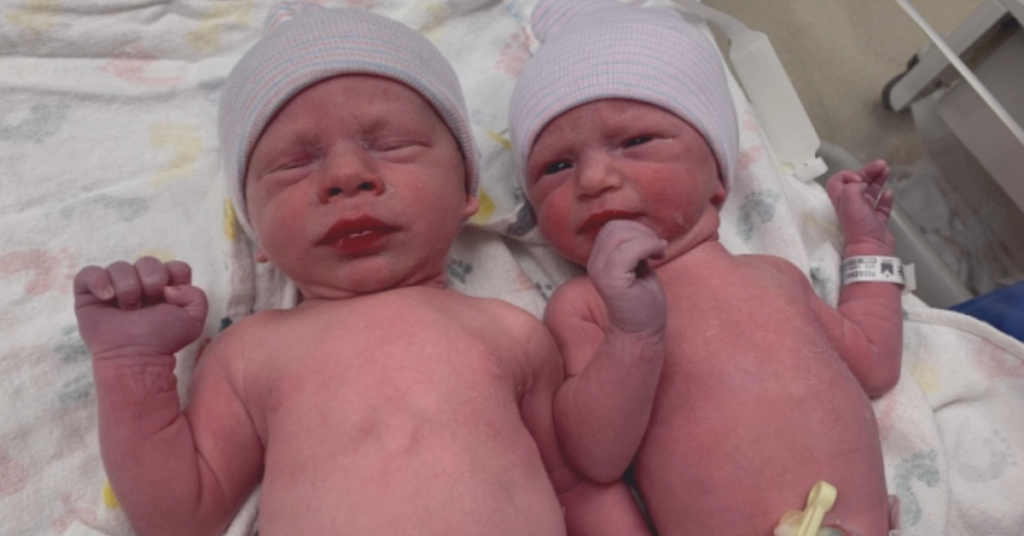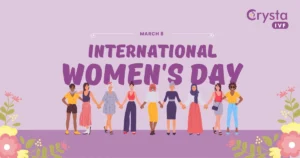Yet another day and another big news came to manifest medical science’s incredible progress over the years. As a result, the boundaries of life have been pushed further than ever before.
This time the incredible news came from the United States, where a couple welcomed the twins, Lydia and Timothy Ridgeway, from embryos frozen 30 years ago.
The birth of twins from 30-year-old embryos is a medical first, and it is a testament to the advances that have been made in IVF and embryo freezing technology. It also provides hope to couples struggling to conceive, as it shows that there may be other options available.
Amazing Odds: Couple Gives Birth To Twins After Using Frozen Embryos Created 30 Years Ago
On 31st October 2022, a couple in the United States, Rachel and Philip Ridgeway gave birth to twins from embryos frozen for 30 years (29 years and 10 months). The embryos were created through the in-vitro fertilization (IVF) process and were frozen on April 22, 1992, at nearly 200 degrees below zero, suspended in time.
The couple, who wished to remain anonymous, underwent In Vitro Fertilization (IVF) to conceive a child back in 1992. The husband was in his early 50s, and they used a 34-year-old egg donor.
The anonymous married couple later decided to donate the embryos to the National Embryo Donation Center (NEDC) in Knoxville, Tennessee, hoping another married couple could use them.
The embryos waited patiently for nearly 3 decades at the donation centre until October 2022.
Embryo donation is a form of third-party reproduction in which couples or individuals donate surplus embryos to another person or couple. The couple who gave birth to the twins had tried unsuccessfully to conceive for several years before turning to embryo donation.

After 29 years and 10 months, the donated embryo is considered to be the oldest embryo that resulted in a live birth, according to the National Embryo Donation Center.
Philip Ridgeway was 5 years old when his children Lydia and Timothy got life and have been preserved ever since.
Before this, the previous known holder was Molly Gibson, born in 2020 from an embryo cryopreserved for nearly 27 years.
Embryo Freezing: A Look Into the Future
While freezing embryos is not a new technique, in fact, the first baby born from a frozen embryo was back in 1984. But this amazing news has raised intriguing possibilities about medical science & reproductive technologies and what they can achieve in the near future.
The couple’s story is an amazing example of the advances that have been made in fertility treatments. It also reminds us of the importance of freezing embryos for future use.
For couples who are facing fertility issues, embryo freezing can be a way to preserve their chance of having a biological child. It can also be used to have children later in life, as was the case with this couple.
However, we may never be truly certain about all the progress we are yet to see. Since its inception, assisted reproductive technologies are perpetually giving hope to many couples striving for parenthood.
In case you aren’t aware of Assisted Reproductive Technologies (ART), then know,
Assisted reproductive technologies (ART) are a group of medical procedures used to help couples struggling to conceive. While ART is not a guarantee of success, it has helped many couples achieve their dream of starting a family.
There are a number of different ART procedures available, and each one has its success rate. Cryopreservation is one such technique, where the sperm, eggs, or embryos can be preserved (or frozen) to make it possible for you to have a child sometime in the future.
In general, the success rates for ART are higher than the natural conception rates for couples who are struggling with infertility. This means that couples who use ART have a better chance of conceiving than if they did not use fertility treatments.
While ART is not without its risks, it is a safe and effective way to give hope to couples struggling to conceive.
To Put It Briefly…
Medical science has truly transformed how we live, and there is no doubt that it will continue to do so in the future. We can now effectively treat conditions like infertility that were once thought to be incurable, and we can prolong life in ways that were once unimaginable.
But yet, medical science could be better, and many challenges still need to be addressed. We must also find ways to make medical care more affordable and accessible for everyone.
But despite these challenges, medical science has still managed to impact the world positively, and it will continue to do so in the years to come.
We also thank the hard work of medical scientists and doctors at Crysta IVF and around the world who are constantly searching for ways to make parenthood possible. Infertile couples considering ART should speak with fertility doctors at Crysta IVF to learn more about the risks and benefits of these technologies.
Because sometimes, all you have to do is take a leap of faith and trust the art of probability.




